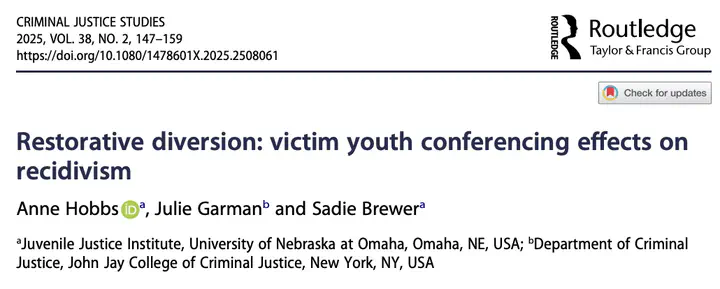Restorative diversion: Victim youth conferencing effects on recidivism

Abstract
Restorative justice diversion programs provide an alternative to traditional diversion programs. Youth participation, reconciliation, reparation, and transformation are essential components of these programs. This study examines the relationship between the type of restorative conferencing (Youth/Victim or Youth/Victim Surrogate) that youth participate in and restorative outcomes. Restorative outcomes include the success of reaching a reparation agreement, reparation goals, and the level of agreement fulfilment. We also examined traditional diversion outcomes including future system involvement, and future detention placements. Using a sample of 714 youth, we explore characteristics of youth referred to a midwestern restorative justice diversion program from November 2015 through March 2023. Quantitative analyses of youth program data suggest that nearly all youth (97.5%) reached a reparation agreement during their restorative conference. In 80.5% of cases in which an agreement was made, the youth successfully fulfilled the conditions of the agreement. Further, conference type was related to the degree of completion of conditions of reparation agreements. Youth who participated in Victim/Youth conferences were slightly more likely to complete all conditions compared to youth who participated in a Youth/Victim Surrogate conference. Findings also suggest that the type of conference, victim, and reparation agreement fulfillment impact future system involvement and detention placement for youth who participated in the program.